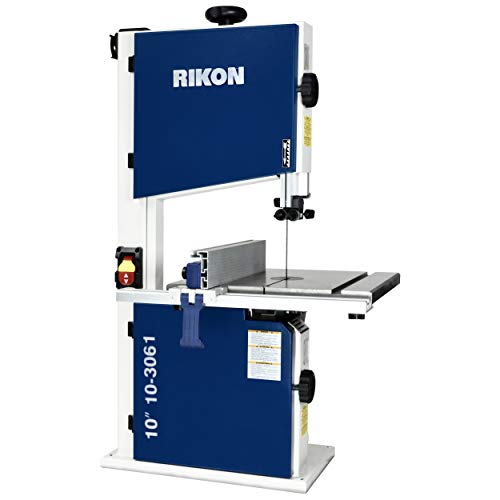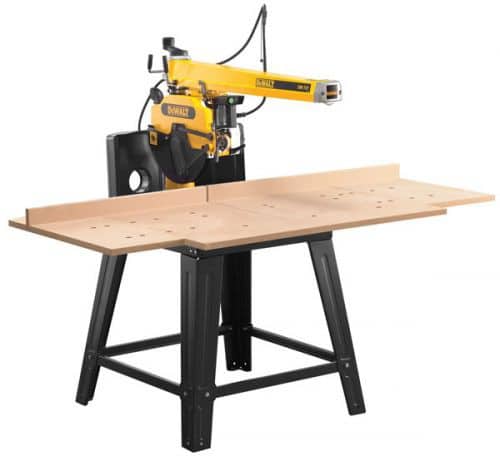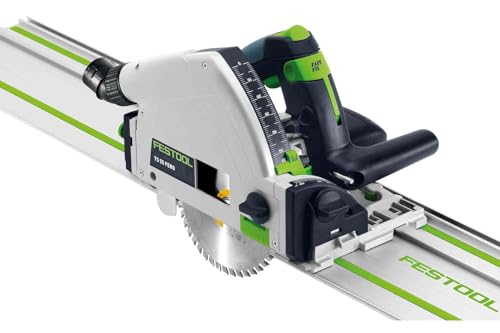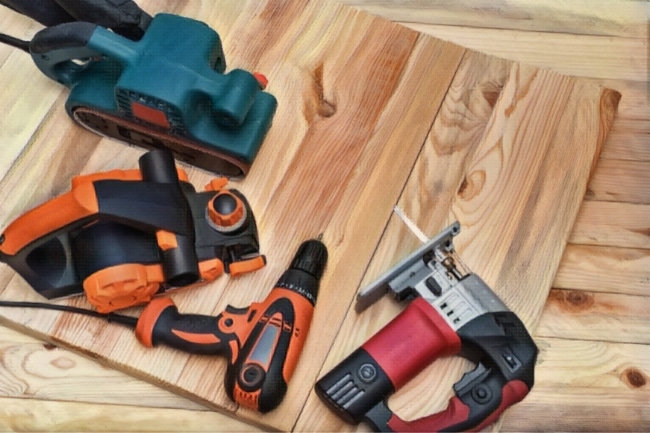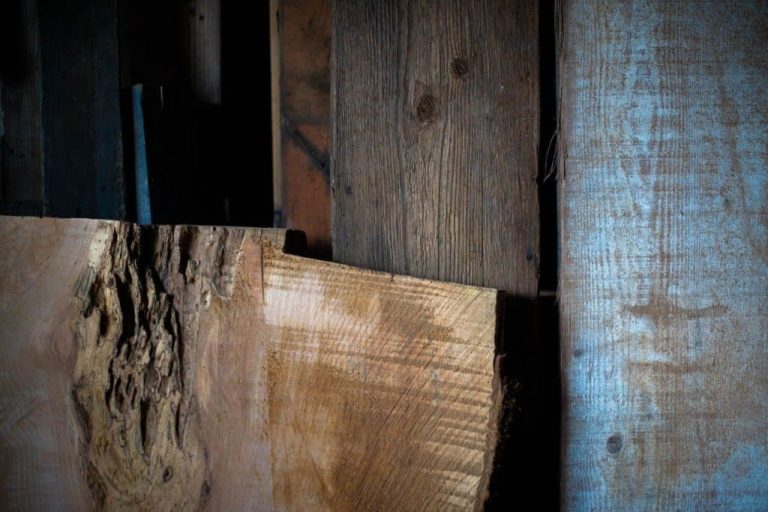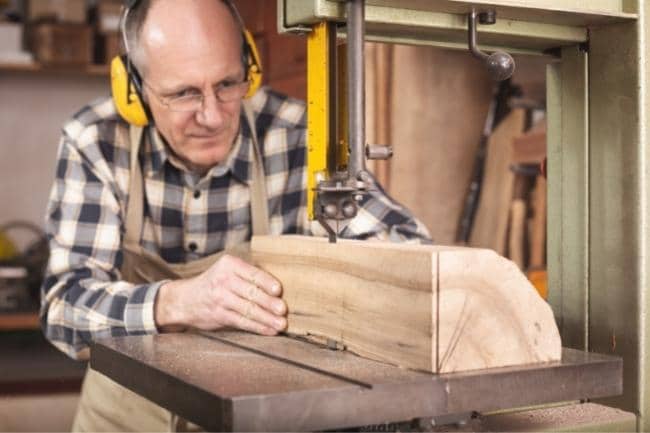Slice it Right: Exploring Different Types of Saws for Woodworking and DIY
This post includes affiliate links. If you decide to make a purchase through my link, I might get a small commission for it at no additional cost to you. Thank you for supporting Upcycle This DIY That!
Introduction to Woodworking Saws
The Essential Role of Saws in Woodworking
Every piece of furniture, every wooden artifact you see around, owes its existence to a crucial tool – the saw. These finely engineered tools have been helping humans transform simple timber into works of art, utility, and everyday comfort for centuries.
Picking the Right Saw: A Game Changer
Selecting the appropriate saw can influence your workmanship significantly. The right saw not only ensures a seamless cutting experience but also impacts the quality of your final product, thus shaping your woodworking journey.
However, it can be overwhelming trying to figure out which one to use for your next project. Especially if you haven’t got much experience or are starting your woodworking journey.
In this article, I will discuss various types of saws and their uses in woodworking, helping you decide when to select the right saw for your needs.
Hand saws and power saws are the primary categories you’ll come across in woodworking, each with its specific set of uses and advantages. Hand saws are perfect for small precision cuts or quick rough cuts, while power saws excel at making quick, clean, and repeatable cuts.
Among these categories, you’ll find specialized saws like Japanese saws, known for their thin and flexible blade that produces precise cuts. Additionally, understanding the essential features of each type of saw and learning how to maintain and use them safely will ensure a smooth woodworking experience.
Key Takeaways
- Choose the right saw for your woodworking project to improve quality and ease.
- Understand the differences between hand saws, power saws, and specialty saws like Japanese saws.
- Prioritize safety and maintenance to ensure a smooth and efficient woodworking experience.
As a DIY-er or woodworker, you’ll encounter various woodworking projects requiring different saws. Knowing the differences and uses of these saws will help you select the right one for your carpentry and woodworking tasks.
YOU MAY ALSO BE INTERESTED IN:
Dive Into DIY: Essential Woodworking Tools For Beginners
Unlock Your Crafty Side: Navigating The Basics Of Woodworking Hand Tools
Crafting Dreams From Scratch: Introduction To Woodworking Tools For Beginners
Types of Saws for Woodworking
Basics of Hand Saws: A Primer
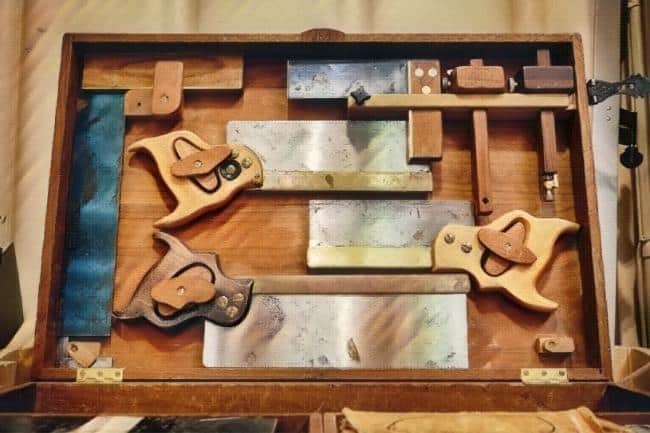
What are Hand Saws?
Hand saws, true to their name, are handheld tools with a blade and a handle used to manually cut through wood. Simple in structure, they are nevertheless pivotal in the world of woodworking.
Key Features and Anatomy of Hand Saws
A hand saw comprises a ‘blade’ armed with ‘teeth’ for cutting and a ‘handle’ for control. The size, shape, and pattern of the teeth significantly impact the saw’s functionality and determine the smoothness and speed of the cut.
Dive into Different Types of Hand Saws
Hand saws are essential tools for any DIY woodworker. They come in various types, each designed for a specific purpose. Understanding the different types of hand saws and their uses will help you choose the right one for your projects.
The Classic Hand Saw: Your First Woodworking Companion
The classic hand saw is an excellent place to begin your woodworking journey. Its versatility makes it suitable for a variety of tasks.
The key feature of a traditional hand saw is a long blade with large teeth designed to remove a lot of material quickly, which is ideal for making rough cuts in wood. The simplicity of its design and ease of use make it a staple in any beginner’s toolbox.
Back Saw: Precision in Every Cut
A back saw, often used with a miter box, is designed for making precise cuts. The rigidity provided by a reinforced top edge, or ‘back,’ makes it less likely to bend during use, providing straight and accurate cuts.
As a beginner, you might use this for creating joints, such as tenons and miters, or any project requiring high precision. It’s your trusted ally for detailed work.
Dovetail Saw: Crafting Delicate Joints
It’s a type of back saw but smaller, and while the dovetail saw might seem daunting at first, it’s essential when you progress towards intricate joinery in your projects. This saw is handy for crafting dovetail joints due to its fine teeth and thin blade, offering a level of precision ideal for detail-oriented tasks.
Rip-Cut Saw: Going With the Grain
When it comes to making long cuts along the grain of wood, the rip-cut saw is your best friend. It features fewer teeth per inch that are specially shaped to efficiently remove wood as they cut.
It’s a handy saw for beginners as it’s used to size wood down to the right length before other, more detailed work begins. However, be prepared for a somewhat rough edge, which can be cleaned up with sandpaper or another tool.
Crosscut Saw: Perfect Cuts Across the Grain
Coping Saw: Curves Made Easy
As a beginner, you might be intimidated by the prospect of cutting curves or intricate shapes. That’s where the coping saw comes into play. Its thin blade and deep frame allow you to easily cut curves and complex patterns, making it perfect for decorative projects or cutting out small interior shapes.
Keyhole Saw: Perfect for Tight Spaces
With its pointed, narrow blade, a keyhole saw(also known as a jab saw) is a unique tool ideal for beginners in woodworking. It stands out for its ability to start cuts in the middle of a piece of wood without a pre-drilled hole.
The design allows for exceptional maneuverability in tight spaces and is perfect for cutting out intricate shapes unreachable by other saws.
From creating internal cutouts to making holes in hard-to-reach places, a keyhole saw is a practical addition to your toolbox. It proves particularly useful for various DIY projects, enhancing the versatility of your woodworking repertoire.
Fret Saw: Mastering Delicate Designs
The fret saw is a specialized woodworking tool known for its high precision in cutting delicate, intricate designs. While it shares similarities with the coping saw, its thin blade and deep frame set it apart.
These features allow the fret saw to make sharper turns and longer cuts, making it perfect for elaborate scrollwork or marquetry.
Although it may seem intimidating for beginners due to its delicate nature, with practice, the fret saw can significantly enhance the range of projects you can undertake in your woodworking journey.
Power Saws: Leveling Up Your Woodworking Skills

Introduction to Power Saws
Power saws, energized by an electric motor, mechanize the cutting process, offering speed, power, and precision beyond the realm of hand saws. They broaden the scope of woodworking projects you can undertake.
Why Switch to Power Saws? Advantages and Considerations
Switching to power saws offers benefits such as reduced manual effort, increased speed, and enhanced precision. However, they demand more safety precautions and entail a steeper learning curve.
Table Saw: The Heart of Any Serious Workshop
The table saw is a workhorse in any serious woodworking setup. Known for its power and precision, this tool consists of a circular saw blade mounted on an arbor that protrudes through the surface of a table. Its stationary design provides stability and control, making it excellent for making straight, long cuts, or rip cuts.
From crafting furniture to building decks, the table saw easily handles a vast range of tasks. Its adjustable blade can change in height and angle, allowing for bevel, miter, and dado cuts.
Table saws come in different types, each catering to varying needs and experience levels:
> Portable Table Saws: These include benchtop models and job site saws. They’re designed for easy transportation and are ideal for hobbyists or those who need to carry their tools to different locations.
> Contractor Table Saws: Larger and more powerful than portable models, contractor saws are an excellent middle-of-the-road option offering more precision and stability.
> Cabinet Table Saws: These are the largest, most accurate, and most powerful type. They’re usually found in professional woodworking shops and are built to handle heavy-duty tasks consistently.
> Hybrid Table Saws: These are a blend of contractor and cabinet saws, offering a balance of power, size, and price, making them suitable for serious hobbyists and small professional workshops.
A portable or contractor table saw can provide an excellent start for beginners. As one becomes more experienced and takes on larger, more complex projects, upgrading to a cabinet or hybrid table saw could be beneficial.
Miter Saw: Angle Cuts Made Easy
The miter saw, a must-have in any woodworking setup, shines in its ability to make quick, accurate crosscuts and angle cuts, hence its name. This power tool consists of a mounted circular saw that pivots to produce angled cuts, or miters, on a piece of work held against the fence.
Miter saws excel in precision. Whether you’re crafting picture frames, door frames, or window casings, the miter saw delivers accurate and clean cuts every time.
Its simple operation makes it an accessible tool for beginners, yet its potential for precision makes it a staple in the professional woodworker’s toolkit.
There are several types of miter saws to suit various tasks and experience levels:
> Standard Miter Saw: This saw makes straight and miter cuts. It’s perfect for simple tasks like making frames and is a great starting point for beginners.
> Compound Miter Saw: This saw makes miter cuts and can be tilted to one side to make bevel cuts. It’s perfect for more complex tasks that require angled cuts in two planes, like crown molding.
> Dual Compound Miter Saw: Much like a compound miter saw, but it tilts in both directions, allowing for bevel cuts at any angle.
> Sliding Compound Miter Saw: This saw combines the features of a compound miter saw with a sliding feature that allows the blade to move forward and backward, increasing the length of cut it can make.
Selecting the right miter saw depends on the nature of your projects. Beginners might find a standard miter saw sufficient, but a compound or sliding compound miter saw can be a valuable upgrade as you take on more complex tasks.
Circular Saw: Versatility and Effortless Straight Cuts
Every DIYer needs a circular saw in their arsenal. This portable power saw is excellent for quickly and efficiently cutting various materials like wood, metal, and PVC pipes.
For beginners, a basic circular saw is a great starting point. It’s simple to use, provides ample power, and offers a gentle introduction to woodworking power tools.
Circular saws come in a variety of types, including:
Sidewinder Circular Saws: These are lightweight and perfect for most home and DIY projects.
Worm Drive Circular Saws: Also known as in-line saws, they offer more torque and are suitable for heavy-duty tasks.
Hypoid Circular Saws: Similar to worm drives, these offer high torque but with a sealed motor, requiring less maintenance.
Cordless Circular Saws: They provide mobility, making them perfect for projects where portability is a concern.
Mini and Compact Circular Saws: These are smaller, easier to control, and ideal for light tasks and quick cuts.
Jigsaw: Your Go-To Saw for Irregular Cuts
A jigsaw is a highly versatile power tool that allows for a wide range of straight, curved, and plunge cuts. For beginners, a jigsaw’s user-friendly design is an excellent introduction to power tools, offering superb control, adjustable speeds, and quick blade-changing mechanisms.
Key features such as variable speed control and orbital action settings enhance the jigsaw’s flexibility, catering to different materials and cuts.
Moreover, the array of blade types, bevel adjustment, and dust collection features ensure an efficient and tidy cutting experience. There’s a variety of blades available, each tailored to different materials and types of cuts.
From cutting out sinkholes in countertops to crafting detailed scrollwork, a jigsaw’s flexibility makes it a valuable tool in any woodworking endeavor. Its blend of versatility and user-friendliness makes a jigsaw a go-to power saw for woodworkers of all experience levels.
Scroll Saw: The Fine Artist’s Tool
The scroll saw is a specialized tool that stands out for its ability to make intricate, delicate cuts with great precision. It operates with a reciprocating blade, which is small and thin, enabling it to execute extremely tight curves and complex patterns that other saws can’t handle.
The scroll saw is often compared to a jigsaw, but where it shines is in its ability to make more controlled, precise cuts, especially in thinner materials.
Scroll saws are particularly popular among woodworkers who engage in detailed work, such as creating intricate patterns, cutting dovetail joints, or crafting wooden portraits and puzzles.
One of the unique features of a scroll saw is that it can make internal cuts in a workpiece without an entry slot. By threading the blade through a small hole in the material and mounting the blade on the saw, you can cut intricate designs within the workpiece, making the scroll saw an artist’s tool.
For beginners, a scroll saw is a safe and easy-to-use tool, albeit one that requires patience and a steady hand. Its blade moves up and down rather than in a circular motion, which reduces the risk of kickback and allows for more control over the cut.
While mastering the scroll saw can take some practice, the potential for creating beautiful, intricate work makes it a rewarding tool to learn.
Band Saw: Versatile Cutting on a Larger Scale
With its uniquely designed, continuous blade, the bandsaw stands as a key player in the realm of woodworking tools. It offers remarkable versatility, capable of both straight and curved cuts with unmatched smoothness.
Its strength and the continuous motion of the band-like blade ensure consistent cutting, making it a favored choice for working with not just wood but also metal and various other materials.
Beyond its versatility, the bandsaw shines when handling sizable tasks. Whether resawing lumber into thinner slabs or cutting large workpieces down to size, the bandsaw delivers precision and ease. This tool’s capabilities make it an asset for both beginners and seasoned woodworkers, opening a wide array of possibilities for projects and designs.
Band saws come in various sizes, typically determined by the throat distance (the distance from the blade to the back of the saw), ranging from small benchtop models with a throat distance of less than a foot up to large floor models with throat distances over two feet.
With its downward-cutting action offering reduced kickback and versatility in handling curved and straight cuts, the band saw is a go-to tool for any aspiring woodworker.
Reciprocating Saw: The Demolition Expert
The reciprocating saw, often referred to as a ‘Sawzall’ (which is actually a brand name that has become synonymous with this tool type), is a powerful tool that excels in demolition and remodeling tasks.
The hallmark of a reciprocating saw is its back-and-forth cutting motion, similar to that of a jigsaw, but with much more power.
With the ability to slice through wood, metal, and even masonry, this tool can be used for various applications, including cutting through nails and pipes, disassembling pallets, or quickly removing sections of drywall. It’s also handy for pruning trees and cutting through tough materials that other saws struggle with.
For a beginner, a reciprocating saw might not be the first power saw you reach for, but its power and versatility make it a great addition to your tool arsenal as your woodworking skills progress. It’s important to note that this tool can be aggressive, so proper safety precautions and techniques should be practiced when using it.
Radial Arm Saw: The Multi-Purpose Powerhouse
The radial arm saw is a versatile machine that can execute several different types of cuts, including crosscuts, rip cuts, and miter cuts. The defining characteristic of this saw is its motor and blade assembly, which can be pulled across a fixed arm or “radial arm,” allowing you to cut through wide pieces of material.
Radial arm saws are handy for making repeatable, accurate cuts. They are highly adjustable, enabling you to set the exact length and angle of the cut.
While they’re generally used for crosscutting, they can rip stock, make dadoes, and even function as a drill press with the right attachments.
For a beginner, a radial arm saw might seem complex due to its range of potential adjustments, but it offers significant versatility once mastered. It’s worth noting that, due to its design, extra care is needed when setting up and operating a radial arm saw to ensure both accuracy and safety. This tool is usually added to a workshop when a woodworker’s skills and needs advance beyond simpler saws.
Hole Saw: Creating Perfect Circles with Ease
A hole saw isn’t a standalone tool but rather an attachment used with a drill to create precise round holes. It’s a short tube with a saw edge at one end.
The hole saw is placed into the drill’s chuck and then used to cut through wood, plastic, or even metal.
Hole saws come in a wide range of sizes, typically from about 3/4 inch to 6 inches in diameter, making them ideal for creating holes for everything from small conduits to large plumbing pipes.
They are especially useful in carpentry, electrical, and plumbing work.
Panel Saw: The Large Sheet Specialist
As the name implies, a panel saw is specifically designed for cutting large panels, typically of wood or plastic, but sometimes metal.
These large stationary machines are a common sight in professional woodworking shops or DIY stores, where they are used for precisely cutting large sheets of material, such as plywood or MDF, into smaller, more manageable sizes.
Panel saws come in two main types: vertical and horizontal. Vertical panel saws are space-efficient and require the user to move the saw through the stationary material.
In contrast, horizontal panel saws have a sliding table that carries the material into the blade.
A panel saw might seem intimidating for beginners due to its size and purpose. However, they are surprisingly easy to use, offering precise cuts with minimal effort. Despite their professional-grade status, smaller, more affordable models are available for hobbyists or DIY-ers who often work with large sheet materials.
Track Saw: Precision Guided Cuts Every Time
A track saw, also known as a plunge saw, is a versatile power tool that combines the portability of a circular saw with the accuracy and ease of a table saw.
As the name suggests, a track saw runs along a guide rail or “track,” ensuring a straight and precise cut along the entire length of the material.
One of the most significant advantages of a track saw is its ability to cut large sheets of material, such as plywood, right on the spot without moving them onto a table saw. This is particularly useful when working in small spaces or on a job site where transporting large pieces of material to a stationary saw is impractical.
The track saw is also adept at making plunge cuts. This means it can start a cut in the middle of a workpiece – a task that would be challenging for other types of saws. This feature comes in handy when you need to create an opening in a countertop for a sink or make a vent in a panel.
A track saw seems like an advanced tool, but it’s relatively straightforward to use. For beginners, it offers an excellent introduction to making accurate, straight cuts in a safe, controlled manner. As your skills grow and projects become more complex, you’ll appreciate a track saw’s flexibility and precision.
Japanese Saws
Japanese saws are an excellent choice for both beginners and experienced woodworkers. With their unique pull-stroke cutting style, these saws provide clean, accurate, and efficient cuts as you perform various woodworking tasks. In this section, we’ll discuss some of the most popular types of Japanese saws and their specific uses to help you make the most of these exceptional tools.
Dozuki
The Dozuki is a versatile Japanese saw known for its thin and flexible blade, making it perfect for making precision cuts. One of the key features of this saw is its reinforced spine that provides excellent control and stability, ensuring smooth, straight cuts every time.
This saw works great for cutting dovetail joints, tenons, and other delicate woodworking tasks. With its fine teeth, the Dozuki allows you to achieve clean cuts, even in delicate materials like thin plywood and veneers.
Ryoba
Ryoba saws are highly versatile and an essential addition to your woodworking toolbox. A unique feature of the Ryoba is its double-sided blade; one edge has larger teeth for ripping cuts, and the other edge has finer teeth for crosscutting.
This dual-purpose design makes it a convenient choice when working on various woodworking projects. They are particularly useful for tasks such as cutting tenon shoulders, dovetail joints, and trimming joints.
They are also great for tasks that require a smooth finish, such as trimming veneers or cutting thin stock.
Azebiki
Last but not least, the Azebiki saw is a specialized Japanese saw that has a curved blade with teeth on both sides. It is designed for mid-panel cuts, grooves, and dovetail joints.
The convex blade allows for the saw to begin the cut anywhere, at any angle on the surface of the wood.
This makes it perfect for trimming headstock overlays and veneers, but it is also useful for drawer fronts, pierced panels, and anywhere else where you need to start a cut in the middle of a board.
The Azebiki’s unique shape allows it to slip right into tight spaces without damaging the surrounding material. It’s an invaluable tool for ensuring a professional-looking finish in your woodworking projects.
They come in different sizes and tooth configurations, with crosscut sides usually having 16 teeth per inch (tpi) and rip sides having 10 tpi.
Kataba
While the versatility of Ryoba and Azebiki saws—each featuring dual-edged blades for different types of cuts—has its own set of merits, the Kataba saw is engineered with a different purpose in mind. Its single-sided blade excels at executing deeper, highly accurate cuts.
The blade’s unique construction adds to its efficacy; it’s noticeably thicker at the toothed edge and then tapers towards the back. This particular design translates to better stability and control as you guide the saw through the wood.
What really sets the Kataba apart is its suitability for jobs that demand pin-point accuracy. If you’re working on crafting tenons for a snug fit or need to slice through the materials with laser-like precision, the Kataba is the tool for the job. Its thicker blade minimizes wobble, allowing for a smoother, more controlled cut, which is especially important when the margin for error is razor-thin.
Combined with a well-designed handle that provides a secure, comfortable grip, the Kataba saw becomes an essential asset for woodworkers looking to achieve fine, meticulous results in their projects.
By incorporating these Japanese saws into your woodworking arsenal, you’ll be well on your way to mastering various woodworking techniques and creating beautiful, functional items for your home.
Important Features
When choosing a saw for your woodworking projects, several important features must be considered. In this section, we’ll discuss Teeth Per Inch (TPI), Kerf, Blade Type, and Set, which can heavily influence the performance and suitability of a saw for particular tasks.
Teeth Per Inch (TPI)
TPI is crucial in determining how clean or rough a saw will cut. Generally, a higher TPI will result in smoother cuts, while a lower TPI will cut faster but with more uneven edges. You’ll want a saw with a high TPI for detailed work, but for rough cutting or general use, a lower TPI will suffice.
- High TPI: Fine, clean cuts. Ideal for detailed work or cutting thin materials.
- Low TPI: Faster, rougher cuts. Suitable for general use or rough-cutting thicker materials.
Kerf
Kerf refers to the width of the material removed by the saw blade as it cuts. A wider kerf means more material is removed during the cut, increasing the chance of splintering or chipping, especially on delicate or fragile materials. However, a narrow kerf requires less effort to make a cut, which can benefit detailed work or when cutting harder materials.
- Thin kerf: For detailed work or cutting harder materials. Requires less effort.
- Wide kerf: Removes more material during the cut, increasing the chance of splintering or chipping.
Blade Type
There are various blade types available for different saws and purposes. Some common blade types include:
- Crosscut blades: Designed for cutting across the wood grain. These blades typically have a higher TPI and produce clean, accurate cuts.
- Rip blades: Made for cutting along the wood grain. They usually have fewer teeth and can cut faster but with slightly rougher edges.
- Combination blades: A versatile option suitable for both crosscutting and ripping. They typically have an alternating tooth pattern to handle various tasks but may not excel in either.
Consider the tasks you’ll perform most frequently with your saw and choose a blade type that best suits those needs.
Set
The set of a saw blade refers to the angle of its teeth, either bent to the left, right, or both. The set can impact how easy it is to make a cut and the overall finish quality. Here are some common types of set:
- Alternate top bevel (ATB): Teeth are angled alternately to the left and right, providing a smoother cut in crosscutting and ripping tasks.
- Flat top grind (FTG): Teeth are aligned vertically, ideal for fast ripping cuts, but may leave rougher edges.
Take the time to consider these important features when choosing a saw for your woodworking projects. A thorough understanding of these aspects will help you make more informed decisions and ultimately lead to better results in your work.
Safety and Maintenance
When working with saws for woodworking, it’s essential to prioritize safety and maintain your tools properly. In this section, we’ll cover the crucial safety and maintenance aspects, including kickback prevention, replacing saw teeth, and proper care for your saws.
Kickback
Kickback is a common hazard when using woodworking saws. It occurs when the saw blade binds with the material you’re cutting, causing the workpiece or the saw to suddenly and forcefully move toward you. To reduce the risk of kickback, follow these tips:
- Use a riving knife or splitter on table saws to prevent material from pinching the blade.
- Keep your saw blades sharp and clean.
- Use push sticks or push blocks when cutting narrow pieces.
- Maintain a firm grip on both the saw and the workpiece.
- Stand to the side of the cutting line, not directly behind it.
Replacing Saw Blade
Over time, the blades on your saws will wear down and must be replaced. Regular inspection of the teeth is essential to ensure optimal cutting performance. When it’s time to replace the saw blade, consider the following steps:
- For hand saws, replace the entire blade if it has replaceable blades. Otherwise, consult an expert for professional sharpening.
- For circular and table saws, replace the entire blade with a new one, or take it to a professional for sharpening.
- Properly dispose of the old blade, following local regulations and safety guidelines.
Proper Care
Taking care of your saws will help extend their lifespan and ensure they perform at their best. Here are some general care tips for your woodworking saws:
- Keep your saws clean. Remove dirt, dust, and debris from the blades after each use.
- Regularly apply a thin coat of rust-preventative lubricant to the blades.
- Store saws in a dry, temperature-controlled location to prevent rust and corrosion.
- Inspect your saws for damage or wear regularly. Repair or replace any damaged parts promptly.
By following these safety and maintenance guidelines, you can enjoy a safer woodworking experience and keep your saws in top-notch condition.
DIY Projects and Matching Them with Saws
How to Choose the Right Saw for Your DIY Project
Choosing the right saw for your DIY project can be the difference between success and struggle. Always consider the nature of the cut, the type of wood, and the level of precision required.
In your woodworking journey, you’ve come across various types of saws for different purposes. Remember that choosing the right saw for your project is crucial to achieving accurate and clean cuts. I can’t stress enough the importance of being familiar with the tools you’ll use.
Hand saws, such as crosscut saws, are basic tools every woodworker should have in their arsenal. They are excellent for cutting logs, maintaining trees, and even shaping shrubs. A handheld circular saw can be perfect for basic tasks like trimming small wooden pieces or cutting plywood. Its portability and power make it versatile enough for many home projects.
You’ll want to reach for a jigsaw, or a scroll saw when your projects involve intricate designs or curvy patterns. Jigsaws are fantastic for cutting out irregular shapes and making inside cuts, like a hole in the middle of a board. Scroll saws, on the other hand, are the artists of the saw family. They allow for extreme precision and can make complex cuts, perfect for crafting detailed designs or making decorative pieces.
For a more versatile choice, consider investing in a circular saw. This powered saw allows you to make precise cuts in various materials like wood, plywood, and drywall. The adjustments also enable you to control the angle and depth of your cuts.
A table or band saw may be necessary for larger projects or when working with thick lumber. A table saw is a go-to tool for making straight cuts in large pieces, while a band saw excels in making curved cuts in thick materials.
A miter saw comes into play when you need to make precise angle cuts, such as when installing molding or making picture frames. The blade can be easily adjusted to set the required angle, ensuring a clean, precise cut every time.
Lastly, if your project involves demolition or remodeling, such as removing an old deck or a kitchen renovation, a reciprocating saw is a powerful tool that can cut through wood, metal, and other materials.
Tips and Tricks for Getting the Best Cut
Proper saw use, such as correct grip, right feed rate, and suitable blade choice, can significantly impact your cutting results. Knowledge of these tips can help achieve the perfect cut.
- Select the Correct Blade: Different blades are designed for different materials and cuts. Generally, blades with more teeth give cleaner cuts and are perfect for finishing work, while those with fewer teeth cut faster and are ideal for rough cuts.
- Maintain Your Blade: A dull blade can result in rough cuts and makes your saw work harder, potentially damaging the tool. Regular cleaning and sharpening keep your blade in top shape and prevent rough cuts.
- Use a Backing Board: When cutting thin materials, use a piece of scrap wood as a backing board to prevent tear-out and ensure a clean edge.
- Secure Your Workpiece: Use clamps or a vise to stabilize your workpiece, improving safety and accuracy. Unstable or moving workpieces can result in inaccurate cuts and are a safety hazard.
- Let the saw Do the Work: Apply steady, moderate pressure and allow the speed and sharpness of the saw to perform the cut. Forcing the saw can lead to inaccurate cuts and potential damage to the saw or the material.
As you continue to hone your woodworking skills, you’ll likely encounter even more saws tailored to specific tasks or materials. Take time to learn about their uses and choose the ones that best suit your needs. Never be afraid to ask for help or seek advice from other woodworkers, as everyone’s experiences and techniques differ. Ultimately, the right saw can make or break your project, so choose wisely and work safely.
Good luck with your woodworking projects, and happy cutting!
Subscribe To My FREE DIY Newsletter!
Stay in touch and receive things like updates, special offers, new projects, tips, gear reviews, and more. No spam, promise!
By entering your email address, you agree to get an email newsletter from UpcycleThisDIYThat. I’ll respect your privacy, and you can unsubscribe at any time. For more details, review our Privacy Policy.
Subscribe To My FREE DIY Newsletter!
Stay in touch and receive things like updates, special offers, new projects, tips, gear reviews, and more. No spam, promise!
By entering your email address, you agree to get an email newsletter from UpcycleThisDIYThat. I’ll respect your privacy, and you can unsubscribe at any time. For more details, review our Privacy Policy.
Last update on 2024-04-28 / Affiliate links / Images from Amazon Product Advertising API













